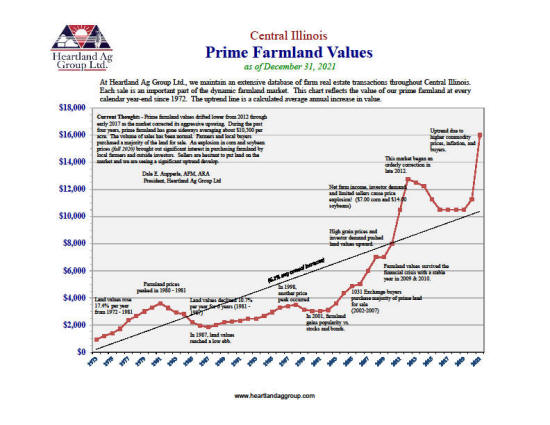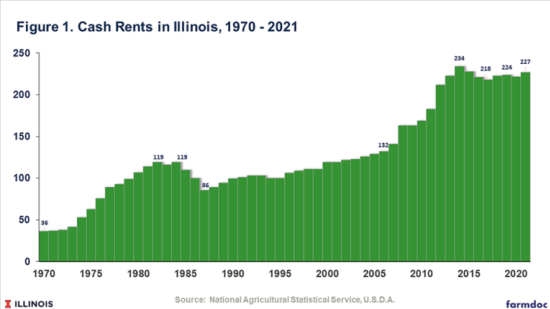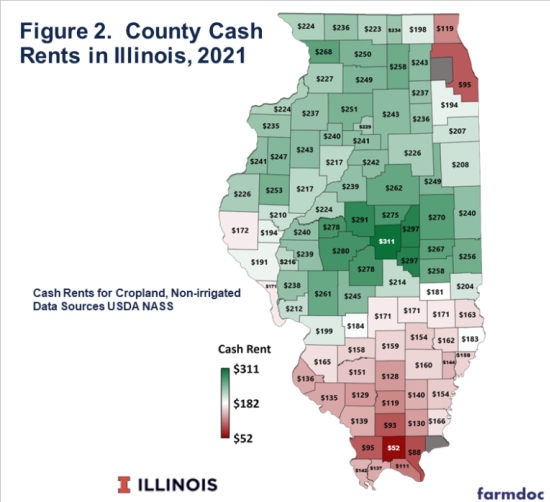|
 The auctioneer Rob Nord
with Martin Auction Service calls the auction, with the sale of the
land being overseen by Heartland Ag Group of Forsyth. He begins the
bidding at $15,000 an acre but gets no takers. He drops to $11,000
grabs that first bid then systematically works the price per acre up
to $17,000. Bidders start balking at the price and he slowly pulls
additional bids from the room $100 at a time. At 17.4 he stops the
auction and goes into a private room with Dale Apperle of Heartland
Ag Group, and representatives of Lincoln College. When they come
out, he tells the group that the land is going to sell, then he
takes another stab at getting the price up a few more hundred, but
it doesn’t happen. The price for the ground comes in at $17,400 per
acre or $696,000 for the 40 acre tract. The auctioneer Rob Nord
with Martin Auction Service calls the auction, with the sale of the
land being overseen by Heartland Ag Group of Forsyth. He begins the
bidding at $15,000 an acre but gets no takers. He drops to $11,000
grabs that first bid then systematically works the price per acre up
to $17,000. Bidders start balking at the price and he slowly pulls
additional bids from the room $100 at a time. At 17.4 he stops the
auction and goes into a private room with Dale Apperle of Heartland
Ag Group, and representatives of Lincoln College. When they come
out, he tells the group that the land is going to sell, then he
takes another stab at getting the price up a few more hundred, but
it doesn’t happen. The price for the ground comes in at $17,400 per
acre or $696,000 for the 40 acre tract.
After the auction, Ryan Apperle, the son of Dale, and also with
Heartland commented that the sale of the land was in line with what
was expected. He further commented that land prices are skyrocketing
right now. Lincoln College Board of Trustees Chairman Patrick Doolin
echoed Ryan’s comment, showing no displeasure at how the sale went.
Among the spectators in the room was long-time farm manager and farm
loan officer for the State Bank of Lincoln, Dave Irwin. Irwin said
the bank has no vested interest in the sale of the land, and he was
there just to see how it all went. He also noted that SBL had been
managing the land for the past 19 years, so he knew personally that
what the buyer was getting was prime farm land, flat, and ready to
till and plant for this year.
Irwin also fielded a few questions about the value of farmland in
general in Logan County and this sale specifically. He noted that
farm values are going up and that the buyer of this particular piece
of ground will more than likely have cash in hand or at least a big
portion of it. He said that with these prices, no one is going to be
able to afford to finance the entire tract and expect to ever come
out on top.
Asked why anyone would buy the land then, he noted that the buyer,
if he has cash in hand will do well with the land. And, the buyer
will build equity in his farm.
Whether or not these land prices will hold into the future is
somewhat unknown. But some like Dale Apperle are pretty sure that
this is a trend that will go into the future for a while at least.


“In 2022, we expect farmland values to remain strong and trending
higher,” Apperle says. He also provides a chart showing land value
performance in central Illinois and a list of the last 20 land
sales. “You can see the average price of those transactions was
$16,740. The range was from $15,000 to $22,500 per acre.”
Apperle has spent more than 40 years in the farm sale business and
over those years his firm has carefully followed the land value
trends in Central Illinois.

Land has been on an overall increase, from 1973 when acreage sold at
around $1,000 an acre through a peak in the early 80’s that quickly
fell off to a gradual climb into the early turn of the century. Land
prices nearly doubled between 2007 and 2012, corrected down again
until 2019, then began a steep climb over the last two years.
Why does this happen? Applerle has a favorite saying “Farmland is
what it earns.”
He expounds saying, “It’s the underlying net income that has driven
farmland higher over the years. That will continue to be the reason
for increasing or decreasing land values. Right now commodity prices
are exceptionally strong.”

Commodities such as corn and soybeans are certainly on the rise. In
the early part of March corn sat at $7.60 per bushel and soybeans at
nearly $17 per bushel. Even so, the gross income for the sale of the
harvest is not going to touch the price of the farmland. Take away
from that gross the ever increasing cost of inputs such as
fertilizer and chemical not to mention fuel for equipment, and the
profit margin for any field is not going to be any greater than it
has been in past years. As a matter of fact, it may be less.
That begs the question, who is right, Irwin, Apperle, or both. Are
the buyers actually farmers, are they buying to increase net worth
or to increase net income?
Apperle contends that the buying is related most of the time to crop
production and he sees that as a vote of confidence in the farming
industry on the whole.
So, who does Apperle say is buying land at this price? “A vast
majority of farmland is purchased for crop production. Only an
occasional tract close to town is purchased to develop.
Occasionally, there is a rural development site for businesses,
etc.”
He adds, “Seventy percent of the farmland is still bought by the
farming community or local buyers. About 30% of the money coming
into the system are outside investors. It’s important to all of us
that farmers believe in their business and reinvest their own money.
It’s a good sign.”
[to top of second column] |

And, then there is another
question. What is happening to those who rely on rented farmland to
increase their income? There are many smaller farms in Central
Illinois where the larger source of their farmland is rental from
other entities. These are farmers who want to grow their production
coupling with farmers who have retired, or those who have inherited
land with no ability to farm it personally.

Cash rents are also on the rise, though the increase in rents have
been more gradually and as of 2021, rents were not the highest in a
30-year tracking done by the USDA National Agricultural Statistical
Services. As of 2021, the average cash rent state-wide was $227 per
acre while the peak in cash rents was in 2014 at $234 per acre.

While these figures show the
overall movement of cash rents, it must be noted that the figures
are a state-wide average. Southern Illinois rents are very low,
while central Illinois rents including Logan County are the highest
in the state.

According to an article written by Gary Schnitkey, Krista Swanson,
Nick Paulson (Department of Agricultural and Consumer Economics -
University of Illinois) and Carl Zulauf (Department of Agricultural,
Environmental and Development Economics - Ohio State University),
published in the September 2021 University of Illinois FarmdocDaily
online, “The counties with the eight highest cash rents are all
located in central Illinois: [again these are averages] $311 per
acre in Macon County, $297 in Moultrie, $297 in Piatt, $291 in
Logan, $280 in Sangamon, $278 in Christian, $278 in Menard, and $275
in De Witt. Higher cash rents also occur in northern Illinois (Carrol
at $268 per acre, DeKalb at $268 per acre) and western Illinois
(McDonough at $256 per acre).”
Like Apperle’s observation on land prices, the article indicates
that the value of the rents is being driven by commodity pricing,
but also comes with a warning. “We note, however, that increasing
cash rents presents risks to farmers. Higher returns in recent years
have occurred because of trend or higher yields, relatively high
prices, and Federal payments through ad hoc programs such as the
Market Facilitation Program and Coronavirus Food Assistance Program.
A return to average commodity prices from 2014 to 2019, without
continued ad hoc support, would lead to very low and likely negative
farmer returns.”

Therefore, those who rent farm ground will need to be all the more
diligent in negotiating their annual rents. Producers will need to
monitor fluctuation in commodity pricing as well as changes in farm
assistance programs throughout the year.
With the current conditions around the globe, producers and land
owners can expect that higher commodity pricing will continue to
impact the value of their land assets. But, as is always the case in
agriculture, the bottom could fall out any time. Those who own and
rent their land should enjoy the boom, but know that there is a
strong possibility that their rental income will go back down as
world issues resolve themselves.
Those who are buying, are buying equity, but also need to be aware
that farm values can drop, thus depleting that net worth they have
worked to provide for the future.
Regardless of the long range outlook the farm industry is still
strong, and adjusting to the challenges before it. In talking with
Dale Apperle, one notable comment bears repeating as it sums up our
agriculture attitude in Logan County. “Seventy percent of the
farmland is still bought by the farming community or local buyers,”
he said. “It’s important to all of us that farmers believe in their
business and reinvest their own money. It’s a good sign.”
Resources:
Information on 2021 Cash Rents with Implications for 2022

|